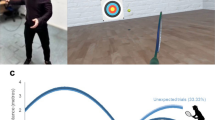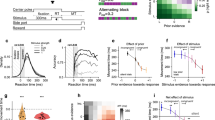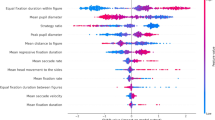Abstract
FOLLOWING visual stimulation by a rotating spiral, a negative after-effect of movement is observed. A preliminary report on what variables are relevant has been made by Holland1. Eysenck, Holland and Trouton2 have since claimed that individual differences in length of after-effect conform to predictions from Eysenck's theory. In view of these claims and of the fact that others3,4 are using this phenomenon in a clinical diagnostic context, it is perhaps important to offer this progress report of further experiments on the extent of normal variation and the factors influencing it.
This is a preview of subscription content, access via your institution
Access options
Subscribe to this journal
Receive 51 print issues and online access
$199.00 per year
only $3.90 per issue
Buy this article
- Purchase on SpringerLink
- Instant access to full article PDF
Prices may be subject to local taxes which are calculated during checkout
Similar content being viewed by others
References
Holland, H. C., Nature, 179, 432 (1957).
Eysenck, H. J., Holland and Trouton, D. S., J. Ment. Sci., 103, 650 (1957).
Spivack, G., and Levine, M., J. Personality, 25, 767 (1957). Page, H. A., Rakita, G., Kaplan, H. K., and Smith, N. B., J. Consult. Psychol., 21, 89 (1957).
Gallese, A. J., J. Clinic. Psychol., 12, 254 (1956). Garrett, E. S., Price, A. C., and Deabler, H. L., Arch. Neurol. and Psychiat., 77, 223 (1957). Price, A. C., and Deabler, H. L., J. Consult. Psychol., 19, 299 (1955).
Holland, H. C., and Beech, H. R., J. Mental Sci., 104, 466 (1958).
Eysenck, H. J., Rivista di Psicologia, 50, 113 (1956).
Author information
Authors and Affiliations
Rights and permissions
About this article
Cite this article
PICKERSGILL, M., JEEVES, M. After-Effect of Movement produced by a Rotating Spiral. Nature 182, 1820 (1958). https://doi.org/10.1038/1821820a0
Issue date:
DOI: https://doi.org/10.1038/1821820a0



